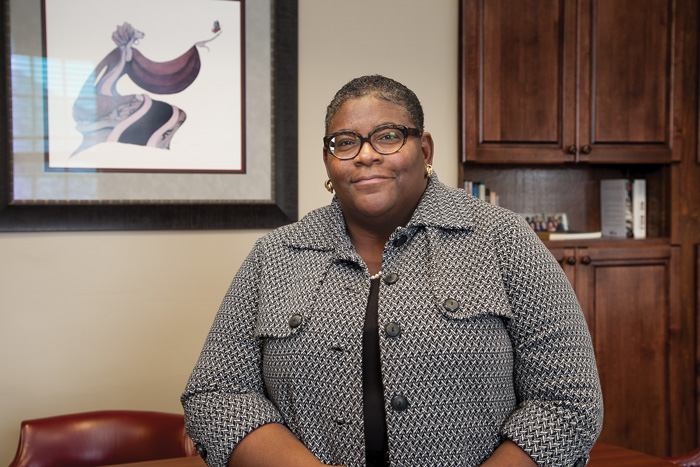Finance & Administration
By the Numbers
- Over 80% of the college's operating budget funded by revenue from tuition, fees, room and board
- 100% of food waste goes to the farm for composting
- Yurts at the farm get 100% of energy from the sun and from wood
- 100% of electricity consumption is offset by renewable energy credits.
President’s Vision
Nancy A. Roseman
Delivering a highly personalized liberal-arts education that relies on close student interaction with faculty and staff is an expensive proposition. We must continue to be disciplined in our budgeting and work to rebuild our financial reserves for the needed projects ahead of us. Learning occurs in a social context on our campus, and we must ensure that we have facilities that encourage that interaction.
BRONTÈ JONES, VICE PRESIDENT FOR FINANCE AND ADMINISTRATION

Dickinson is in a strong financial position, with a healthy endowment and adequate operating funds. We continue to invest in our academic program and our facilities, while also being disciplined about building our financial reserves. Over the past year, we have taken a close look at all of our resources—from facilities to people to space—to ensure that we are maximizing their potential in the most effective, sustainable way.
At present, revenue from tuition, fees, room and board funds over 80 percent of the college’s operating budget, with another 11 percent coming from the endowment. Philanthropy from alumni, parents and friends of Dickinson and other, miscellaneous sources, make up about 9 percent of the revenue stream, which allows us to provide an excellent residential liberal-arts education. As a tuition-dependent institution, we know that we must do our best to hold the line on tuition increases, as we remain committed to making a Dickinson education affordable, especially in light of the increased demand for financial assistance. Each year, we provide more than $41 million in financial aid to students, with 70 percent of our student body receiving some form of financial assistance.
We have held operating budgets relatively flat for the past two years. Because we must contain spending while continuing to invest in our institutional priorities, we are preparing to implement Zero Based Budgeting in the 2015-16 budget. This is not intended as a cost-savings measure but as a focused approach to appropriate and deliberate resource allocation.
As a premier residential liberal-arts institution, we are a people-driven operation, and so it is not surprising that the largest share of our expenditures are personnel costs. Health care accounts for an increasingly large portion of the budget, and we have been focused on finding ways to keep those costs down. An all-campus health care task force has been studying this issue, and several changes were implemented last year, including increasing deductibles and co-pays. The committee is considering additional measures for next year.
A healthy workforce is one of the best ways to contain health care costs, and I am pleased to share that the American Heart Association (AHA) this year recognized Dickinson as a gold-level Fit-Friendly Worksite, a national honor that acknowledges the college’s commitment to encouraging and supporting physical activity, healthy eating and a wellness culture on campus.
We completed several building projects this past year, including the Durden Athletic Training Center and the Kline Center expansion. In addition, we have been exploring uses for Allison Hall, formerly the Allison United Methodist Church, which we acquired in 2013. An all-campus committee was formed to determine the best use of that space but expanded to consider all administrative and academic space. We want to ensure we are optimizing our existing facilities. A campus space-utilization audit was completed last spring, and the committee is considering next steps. The committee also is reviewing previously developed plans for a new residence hall, which would provide additional housing to allow more senior students to live on campus.
Meanwhile, we continue to invest in our existing buildings. As part of a long-term campus renewal strategy, upgrades were made to Malcolm and Adams halls, including improving bathrooms, lounge areas and bedrooms. Each of those improvements was made with best-practice sustainability features in mind. To ensure that we keep sustainability at the forefront of all operational and facilities decisions, we have named an associate vice president for sustainability and facilities planning.